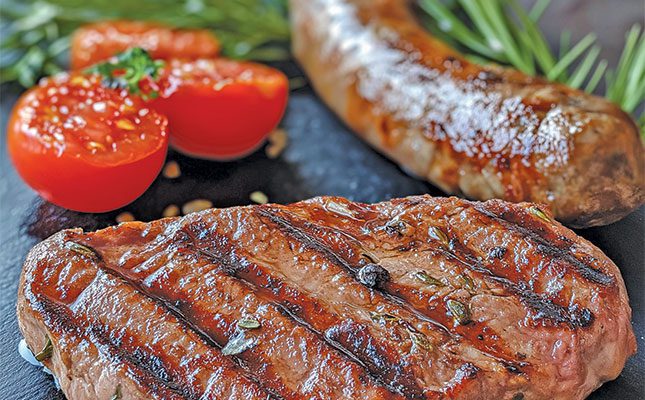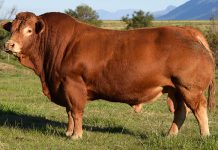
Photo: Supplied
When you are looking to buy a great steak, you want to know what you are buying and which factors guarantee the most tender, juiciest piece of meat.
A bit of research on the South African market refers you to the country’s carcass classification system, and you are quickly pointed towards an A-class steak with a fat coverage of 2 or 3. But what do these numbers mean, and do they guarantee the quality of the steak?
Meat classification system
In South Africa, red meat is primarily classified according to age, denoted by an A (purple stamp), A/B (green stamp), B (brown stamp) or C (pink stamp); carcass fat coverage, denoted by 0 to 6, with 0 being no visible fat and 6 being excessively fat, and 2 (lean) and 3 (medium) being preferable; and conformation (carcass/ muscle shape ranging from 0 to 3, with 0 being flat and 3 round).
Age classes are ascertained by the number of permanent teeth in the mouth of the slaughtered cattle, but the listed age of these animals can differ according to factors like breed type.
So, when looking at a piece of steak in a butchery or supermarket, a purple A3 stamp indicates baby beef with a midway fat covering. While age and leanness of the carcass are most certainly important factors in estimating the quality of the carcass and the meat from it, the system in no way guarantees meat quality.
Why use the current system?
The carcass classification system came into play in 1992 during the deregulation of the South African agricultural market.
The purpose of the classification system was primarily to act as a price formulation system between buyers and sellers of carcasses, as it enables the market to describe carcasses and group them together based on a clear set of physical characteristics of interest to the meat industry.
It made a lot of sense at the time, as most animals were slaughtered directly from producers at local abattoirs, and the carcasses were then classified according to the system, with a generally good mix of different classes.
However, the market changed over time. Commercial feedlots entered the scene, and nowadays, the lion’s share of the produced meat stems from a system where the farmer sells his/her weaned calves to a feedlot, which feeds these animals under intensive conditions until they are market-ready, and has them slaughtered as A2 or A3 carcasses.
Since the carcass classification was already in place, the industry started using it as a type of grading system, where certain quality promises are made according to the carcass class.
The problem is that while the tenderness and age of the animal are correlated, it is not a perfect science. Tender meat is also not necessarily juicy.
While the classification describes the physical attributes of the carcass, it cannot describe the quality. Quality is influenced by factors such as breed, feeding and slaughter processes, and cooling of the carcass and associated pH levels. These are factors you cannot see and, therefore, cannot classify.
Should we change?
The current system can be misleading. An A-class steak is not necessarily tender, while a C-class steak is not necessarily tough. So how do we deliver a constant quality product to the consumer?
Currently, there are calls for the classification system in South Africa to be replaced by a grading system. While it is under investigation, it is not straightforward, as it might be a very expensive system to implement.
Over the years, a lot of research has gone into meat quality and the factors influencing it, and many actors in the red meat value chain do their best to deliver products of exceptional quality to the market by following the guidelines.
One of these is to age meat cuts, with longer ageing periods often improving meat quality to such an extent that the original quality differences between animals and practices are no longer noticeable.
Consumers should in the meantime not trust the classification system as a meat quality system, but rather work with their local butcher to understand what the meat retail sector is doing to deliver quality products to consumers.
Phone the RPO on 012 349 1102/3, or email [email protected].












